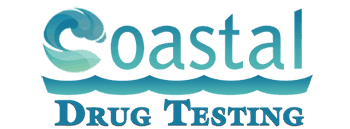 Our local DOT drug and alcohol testing centers are located in Koyukuk AK and the surrounding areas providing DOT drug testing, DOT alcohol testing and DOT physicals for all DOT modes regulated by Part 40. Same day service is available at our Koyukuk AK DOT drug testing facilities and most of our DOT drug testing locations are within minutes of your home or office.
Our local DOT drug and alcohol testing centers are located in Koyukuk AK and the surrounding areas providing DOT drug testing, DOT alcohol testing and DOT physicals for all DOT modes regulated by Part 40. Same day service is available at our Koyukuk AK DOT drug testing facilities and most of our DOT drug testing locations are within minutes of your home or office.
What type of DOT Testing is required?
Coastal Drug Testing provides DOT pre-employment, random, post-accident, reasonable suspicion and return to duty testing at our Koyukuk AK DOT drug testing centers.
If you hold a CDL license, a large, medium or a small trucking company, Coastal Drug Testing has a complete DOT compliance package which includes all the requirements to comply with CFR 49 part 40.
All Coastal Drug Testing DOT drug testing centers utilize SAMHSA Certified laboratories and a licensed Medical Review Officer as required by DOT part 40 regulations.
The U.S Department of Transportation (DOT) requires that all DOT regulated "safety sensitive" employees have a negative DOT pre-employment drug test result on file and be actively enrolled in a DOT approved random drug and alcohol random testing pool (consortium).
In addition, if a DOT regulated company has more than one "safety sensitive" employee, the employer must also have a written DOT drug and alcohol policy along with an on-site supervisor that must have completed a reasonable suspicion supervisor training program.
On the road and need a DOT Drug or Alcohol test? No Worries!
To be compliant with DOT regulations, a company's DOT drug and alcohol testing program must have the following components:
- Employee Drug Testing
- Written Drug and Alcohol Policy
- Supervisor Training
- Substance Abuse Referral
- Employee Education
- Random Selection Program
- Post Accident Testing
- Designated Employer Representative
- Federal Chain of Custody Forms
- Part 40 Regulations on File
The Department of Transportation (DOT) has specific drug and alcohol testing requirements for the all transportation modes all DOT agencies.
Our modes included are:
- Federal Motor Carrier Safety Administration (FMCSA)
- Federal Aviation Administration (FAA)
- Federal Transit Administration (FTA)
- United States Coast Guard (USCG)
- Pipeline and Hazardous Materials Safety Administration (PHMSA)
- Federal Railroad Administration (FRA)
Are You Enrolled in a DOT Consortium?
Individuals who are employed in a position designated as "safety sensitive" must be actively enrolled in a random drug and alcohol testing program. Oftentimes, covered employees will join a group of other DOT regulated employees in a random testing program and this is referred to as a DOT Consortium. Generally, an employer who has less than fifty employees or single operators will join the consortium which will comply with the random drug and alcohol testing requirements of 49 CFR Part 40. Employers that have over 50 employees who are regulated by Part 40 may elect to be enrolled in a "stand alone" random testing pool.
The DOT consortium is cost effective and complies with all requirements of 49 CFR Part 40 which mandates that all "safety sensitive" employees be enrolled in a random drug and alcohol testing program.
The Department of Transportation (DOT) has strict regulations requiring regulated companies and independent operators (CDL License Holders) to be an active member of a DOT drug and alcohol Consortium and failure to comply with these regulations can result in significant fines and other DOT sanctions.
We are fully versed in the DOT procedures for pre-employment drug testing, random drug testing, reasonable suspicion drug testing, post-accident drug testing, return to duty drug testing and follow up drug testing.
DOT regulated companies with multiple safety sensitive employees must also have an employee within the company who is assigned as the "designated employer representative" (DER). This is the person responsible for removing any DOT "safety sensitive" employee who is covered by 49 CFR Part 40 from performing a DOT safety sensitive position when a positive drug or alcohol test result has occurred or an employee has refused to take a required DOT test.
If you have recently become a DOT regulated company, within the next 18 months the Department of Transportation (DOT) will conduct a "new entrant" inspection to ensure that you are in compliance with all DOT regulations including the drug and alcohol testing requirements. If you are currently a DOT regulated company, you are subject to regular inspections to ensure compliance.
Avoid DOT fines, penalties and be complaint with all DOT drug and alcohol testing regulations! Coastal Drug Testing can assist small, medium and large DOT companies in complying with all requirements of 49 CFR Part 40.
DOT Drug Testing Locations in Koyukuk AK
(Don't see a location near you? Call us (800) 828-7086)
Local Area Info: Yukon–Koyukuk Census Area, Alaska
Yukon–Koyukuk Census Area is a census area in the U.S. state of Alaska. As of the 2010 census, the population was 5,588. It has the largest area of any county or county-equivalent in the United States. It is part of the unorganized borough of Alaska and therefore has no borough seat. Its largest communities are the cities of Galena, in the west, and Fort Yukon, in the northeast.
According to the U.S. Census Bureau, the census area has 147,805 square miles (382,810 km2), of which 145,505 square miles (376,860 km2) is land and 2,300 square miles (6,000 km2) (1.6%) is water. The area is roughly the same size as the U.S. state of Montana or the country of Germany. The area is bigger than 47 of the 50 states, with only California, Texas and Alaska itself being bigger than the county size. Its population density, at 0.0449 inhabitants per square mile (0.0173/km2), is the lowest in the United States.
As of the census of 2000, there were 6,551 people, 2,309 households, and 1,480 families residing in the census area. The population density was 22.3 square miles (57.7km2) per person. It is the least densely populated county-equivalent of all 3,141 county-equivalents of the United States. There were 3,917 housing units at an average density of 0.027 per square mile (0.010/km2). The racial makeup of the census area was 24.27% White, 0.09% Black or African American, 70.89% Native American, 0.37% Asian, 0.05% Pacific Islander, 0.43% from other races, and 3.91% from two or more races. 1.19% of the population were Hispanic or Latino of any race. 12.95% reported speaking an Athabaskan language at home; of these 35.26% speak Gwich’in and 10.94% speak Koyukon.[clarification needed]
